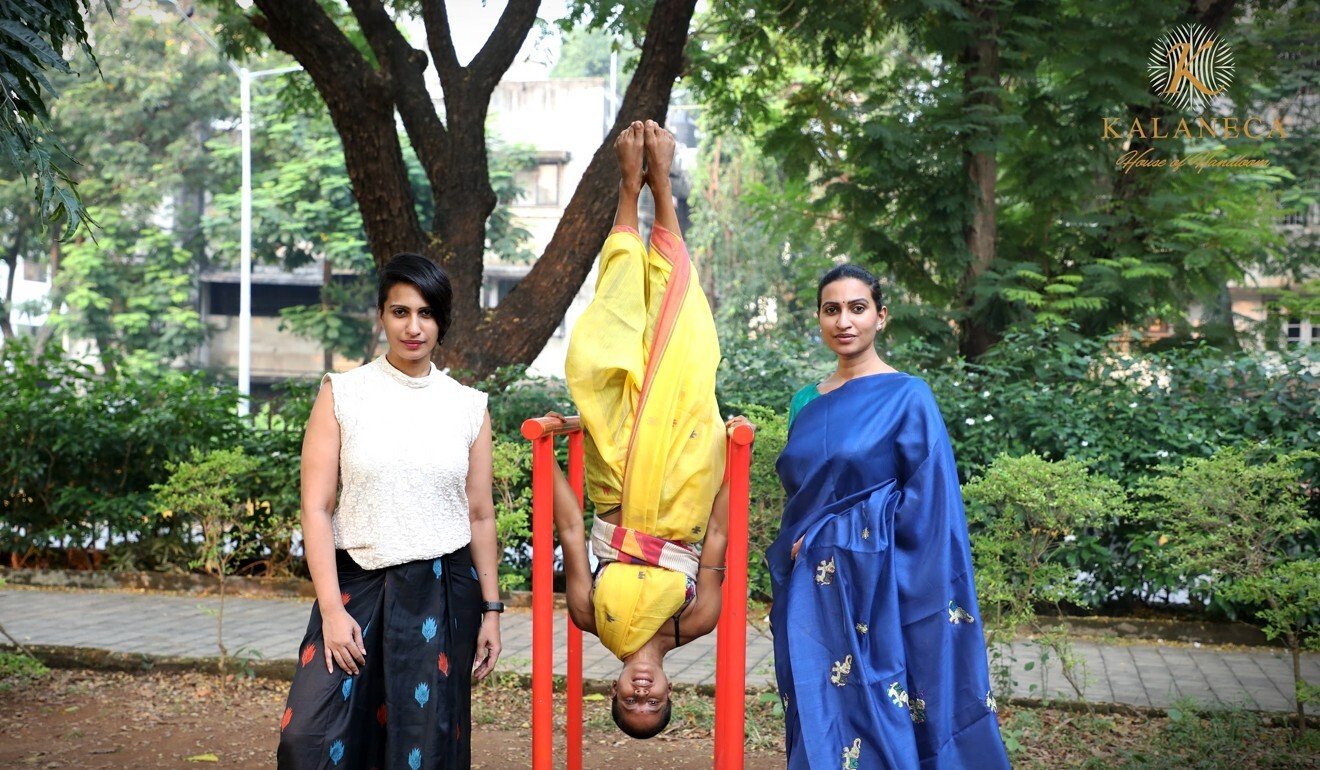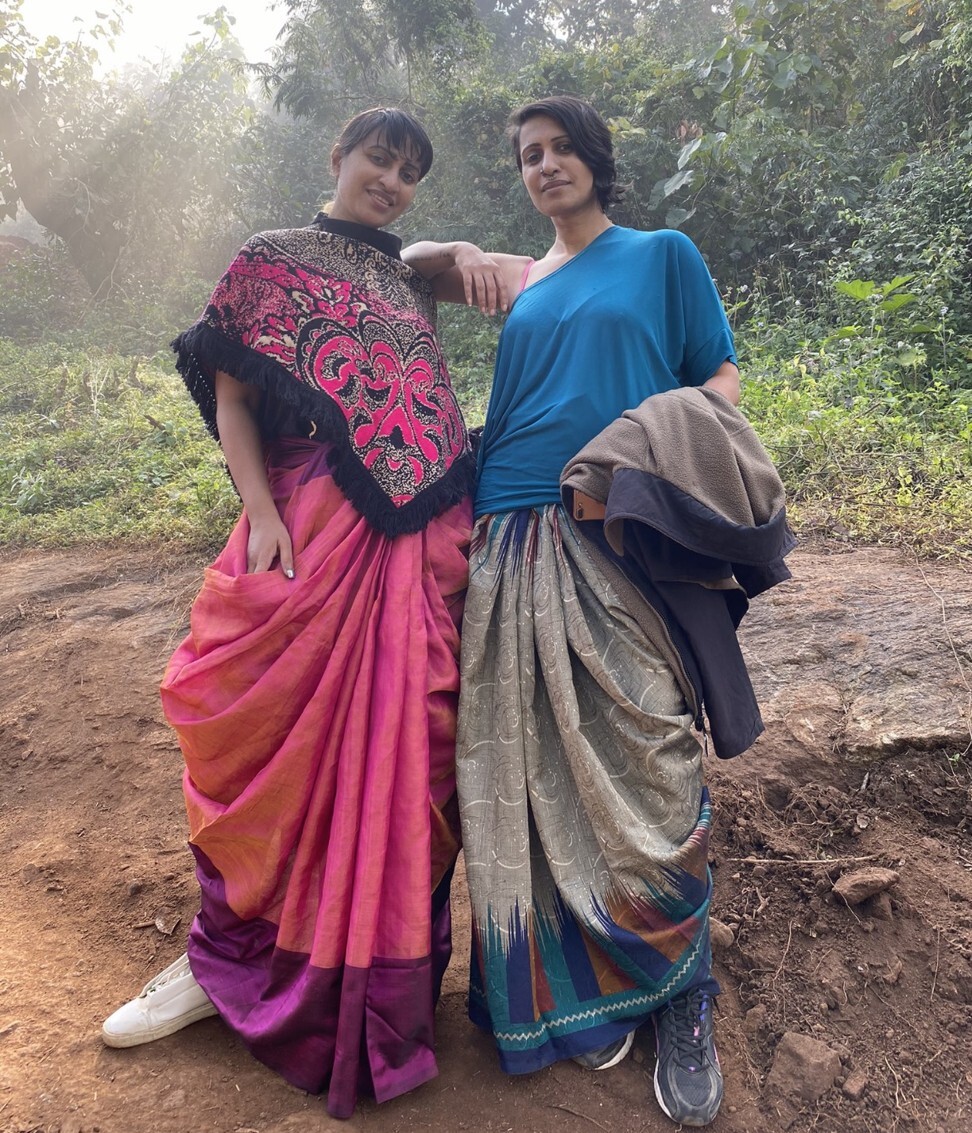
Bringing saris back: the Indian social media influencers celebrating ‘six yards of freedom’
- The traditional garment is stereotyped as staid, restrictive and delicate
- But influencers, actors and long-distance runners have reimagined its possibilities and are wearing it for everything from hula-hooping to skydiving
Saris are stereotyped as staid and restrictive, but these women are wearing them for everything from hula-hooping to skydiving. This story is part of a series on women’s issues in China and Asia to coincide with International Women’s Day.
Eshna Kutty carries her clothes as effortlessly as she does her dance routines. She pirouettes to the popular Bollywood song ‘Genda Phool’ as she spins a hula hoop around her body, twirling it in the air, jumping through it and generally defying the laws of physics as she contorts her limbs through it.
Eye-catching though the routine in the video clip is, it is not Kutty’s dance moves that have captured India’s attention, but what she is wearing. For, rather than her blue sports bra, sneakers and tights she is wearing a maroon sari.
The Instagram post of the professional dancer, 24, accompanied by the hashtag #sareeflow was posted in September and has since been copied by hundreds of other women hooping just like her, all dressed in saris.
As prominent journalist Barkha Dutt put it on Twitter: “Wow, I’m in love – this video represents hope, youth pizazz, panache and individualism. Don’t give a damn and have fun when you are doing it.”
Kutty told her audience the idea had “been on my mind for months, the intention was not to create the most sensual sari videos, but to feel so comfortable and happy wearing it without the pressure of being a delicate lady”.
Commenting on the video’s success, she later added: “I felt proud that the sari, a traditional garment that our generation doesn’t voluntarily buy, is making a striking comeback. What’s overwhelming is that people started doing all kinds of things, wearing a sari.”
In another viral video Parul Arora, 24, a gymnast from Ambala, does cartwheels in a borrowed sari. Her routine has since won praise from the famous American-Romanian gymnast Nadia Comaneci, but for Arora it was all about the sari.
“Young girls avoid wearing saris as it is difficult to walk and sit in it. By undertaking this backflip in a sari, I smashed taboos surrounding a sari-clad woman. Women can do wonders, if guided well,” she told the Hindustan Times.
Yet other videos show gymnast Mili Sarkar, 17, doing backflips in an orange sari in Raiganj, a small village in West Bengal, or Anagha Ravi, also 17, skateboarding in a black sari; or the extreme sports enthusiast Shital Mahajan skydiving in a Nauvari sari (a style popular in Maharashtra).
‘SIX YARDS OF FREEDOM’
Social media influencers aren’t the only ones getting in on the act. Seema Sharma, a Chandigarh-based entrepreneur is promoting the wearing of saris and the weavers who make them with her campaign ‘Nari in a sari’ (Woman in a sari) which reimagines the garment as a modern fashion item.
“People in cities are moving towards garments perceived to be easier to wear like pants, shirts and shalwar kameez, with the sari reserved for special occasions. Through my initiative, I am trying to create a demand for saris, by inspiring young and old women to get back to saris as their garment of choice.”

Every year the running club that Sharma belongs to – the Run Club, Chandigarh – organises a sari run on International Women’s day, with all the participants in red saris.
Indeed, the sari is experiencing an unlikely boost to its popularity among endurance runners.
Hyderabad-based engineer Jayanthi Sampath Kumar set a Guinness World Record in 2017, at the age of 44, for the fastest marathon dressed in a sari. She ran the Airtel Hyderabad marathon in 4 hours, 45 minutes and 30 seconds.
Mumbai-based Kranti Salvi, 52, beat the record a year later at the Berlin marathon, wearing a nine-yard pre-stitched red silk sari worn in the Maharashtrian dhoti-like Nauvari drape. Salvi’s time was 3 hours, 57 minutes.
And of course celebrities have played their part too.
Bollywood actor Adah Sharma has posted videos on social media in which she cartwheels on a beach, dressed in a pink floral sari, tied in the traditional Marathi style. Another video shows her lifting weights and performing backflips in a maroon sari. Not to be outdone, actor Gul Panag has uploaded a video in which she does push ups in a sari.
Mumbai-based twin sisters Ramya Rao and Kavea R Chavali, 36, who run the Kalaneca brand of saris, have been wearing the garment for years. “We have trekked in a sari, done a zip line, cartwheels and headstands and improvised and tried sari styles which haven’t been tried before. ”

“It’s actually six yards of freedom, and though people look at it as a fabric of conformity it’s about being free [whatever your size or shape],” said Rao.
“It weaves around the personality that one wants to give and that makes it versatile and powerful.”











